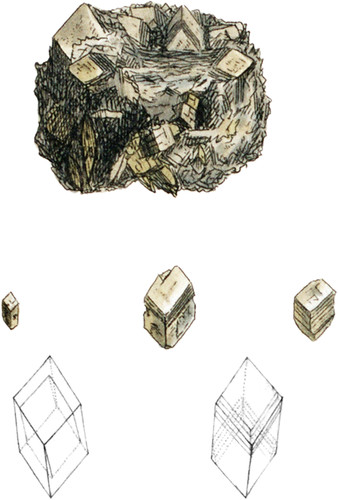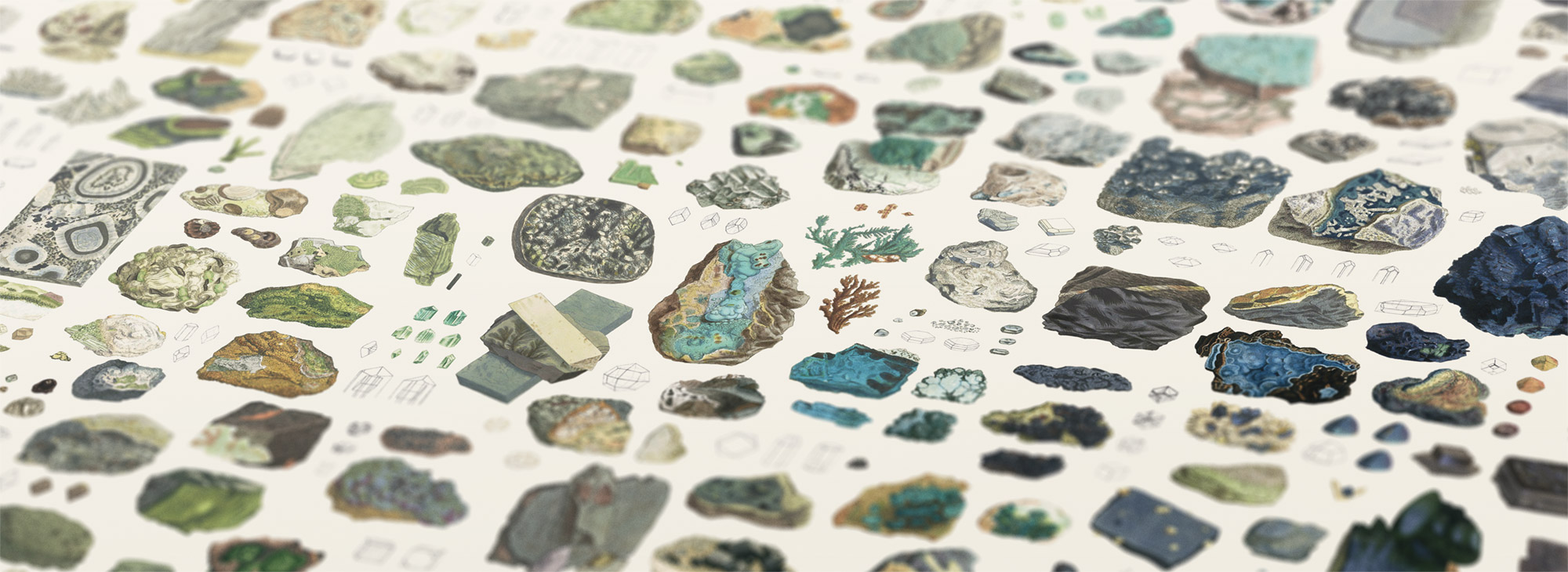 Enlarge
Enlarge
Exotic Mineralogy
Anhydrous Sulphate of Soda and Lime. Glauberite
- Syn. Glauberite. Brongn. Journ. des Mines, No. 133. p. 17. Haüy, Tabl. 23. & 150. Bourn. Catal. 183.
This substance was discovered about the year 1807, in the salt mines at Villarubia, near Ocagna in New Castile, by Mons. Dumeril. At first sight, it may, from the general contour of its crystals, which are very flat, be taken for the flatter lenticular crystals of Gypsum; yet a very little attention will be requisite to discover that it differs, not only in the form of its crystals, but also in its lustre and in several other characters. The crystals are very oblique prisms, with rhomboidal bases; the angles of the base of this prism arc 104°. and 76°. The angle of the incidence of the base upon the adjacent sides is 142°. , and the sharp angles 138°. The inclination of the edge formed by the two sides at the obtuse angles, upon the base is 154°. The faces of the base are generally neat, and even brilliant; the side faces, on the contrary, u.re full of striae parallel to the edges of the faces. The fracture is neat and very easily obtained, parallel to the base; in all other directions vitreous. The primitive form is an oblique prism with a rhomboidal base, whose obtuse angles agree with the obtuse angles of the secondary prism.
The colour of these crystals is said to be most commonly Topaz yellow, but sometimes they are nearly limpid, as in our specimens. Its hardness is superior to that of common Gypsum, which it also exceeds in lustre. When exposed suddenly to fire, the crystals decrepitate, fall in pieces, and melt into a white enamel. Exposed to the air, they preserve their solidity and transparency, provided they are not at all wetted, but if put into water, their surface quickly becomes covered with a milky white coat, and upon being again dried, they do not regain their transparency, but the white coat foils off in powder. Spec. Grav. 2.73. According to an analysis by Brongniart, it contains
| Anhydrous Sulphate of Lime | 49 |
| Anhydrous Sulphate of Soda | 51 |
| 100 |
To the kindness of the Count de Bournon I am indebted for the loan of the specimens from which my figures are taken. The upper figure is a mass of Muriate of Soda, replete with well-defined crystals, a few of which shew the yellow colour: the left-hand figure is a perfect secondary prism: the centre figure has striæ indicating another modification, as explained below: the right-hand figure exhibits the same striæ; the two faces at the bottom of this are primitive, they were obtained by breaking: the interior of the left-hand outline is the primitive form.

